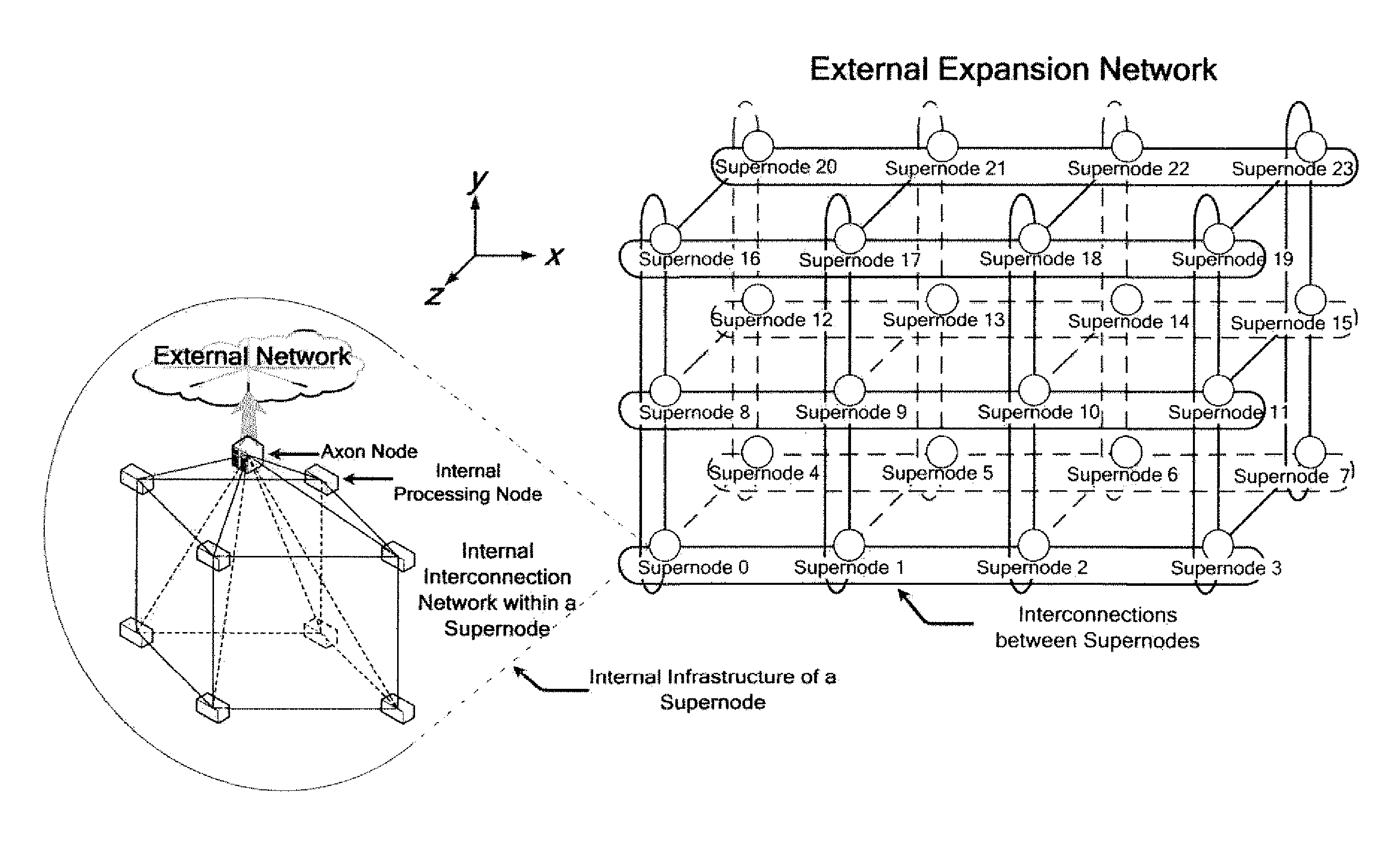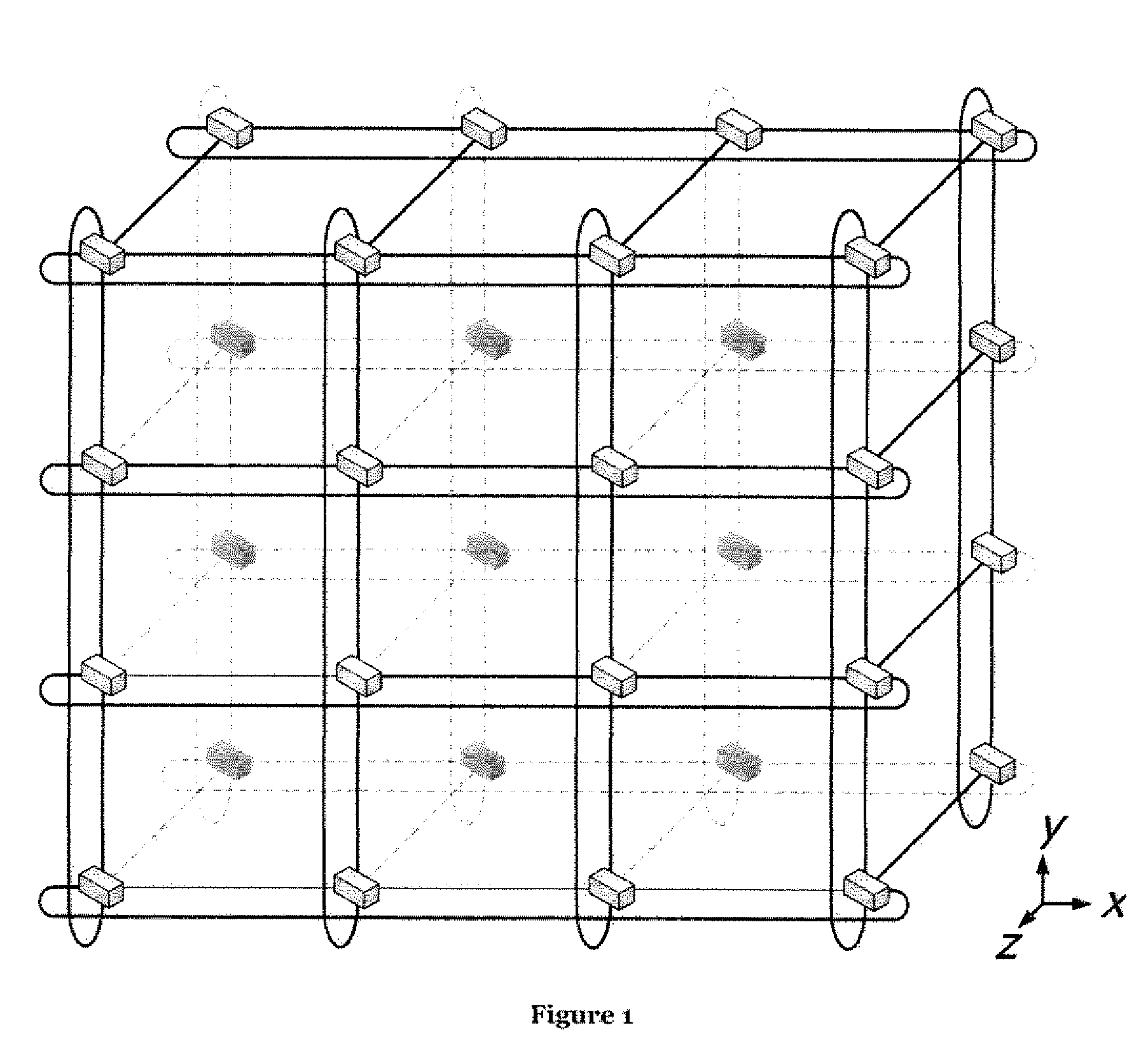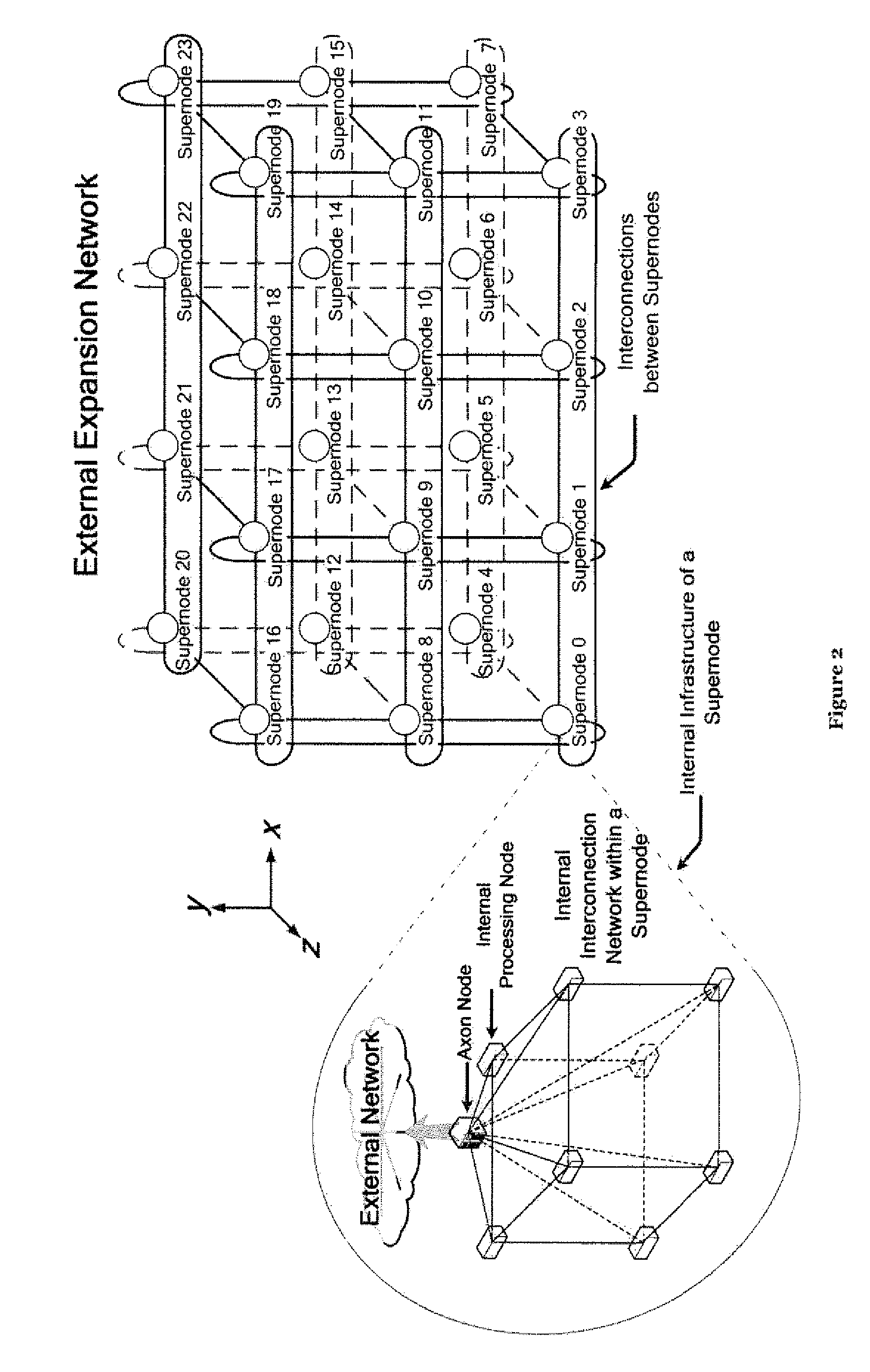Mixed torus and hypercube multi-rank tensor expansion method
a multi-rank tensor expansion and hypercube technology, applied in the field of advanced interconnect architectures, can solve the problems of increasing construction costs, reducing system expandable ability, and complicated system, and achieves improved system scalability, improved system scalability, and more bandwidth
- Summary
- Abstract
- Description
- Claims
- Application Information
AI Technical Summary
Benefits of technology
Problems solved by technology
Method used
Image
Examples
embodiment 1
[0032]A mixed topology is comprised of both internal and external networks: Hypercube and 3-D torus networks H(2×2×2)T(4×3×2)
[0033]FIG. 2 is an exemplary embodiment of a mixed topology comprised of both internal and external networks i.e. H(2×2×2)T(4×3×2). The internal interconnection network of each supernode is a hypercube topology H(2×2×2) which includes eight processing nodes in 2×2×2 and one Axon node and said Axon node connects to all of eight processing nodes where the external interconnection interfaces are provided. 24 said supernodes are interconnected by external interfaces as a three-dimensional T(4×3×2) torus topology to form an external network, so that the whole system can integrate 192 processing nodes and 24 Axon nodes.
embodiment 2
[0034]A mixed topology is comprised of both trunk and expansion networks: T(3×2)T(6×4×2)
[0035]FIG. 3 is an exemplary embodiment of a mixed topology comprised of both trunk and expansion networks i.e. T(3×2)T(6×4×2). The whole interconnection network comprises two independent networks, one is a three-dimensional network as a trunk network, the other is a two-dimensional torus network as an expansion network. Herein, the said 3-D trunk network is based on the T(6×4×2) topology where all of processing nodes are interconnected and the said 2-D expansion network is based on the T(3×2) topology, in which all of Axon nodes are interconnection for especially communication accelerations, such as the long-range messaging and global operations. Each supernode comprises eight processing nodes and one Axon node which connects to all of the said processing nodes and provides the external interfaces among supernodes. Therefore, the whole system is able to integrate 48 internal processing nodes and...
embodiment 3
[0036]A mixed topology is comprised of both trunk and expansion networks: T(6×2)T(6×4×2)
[0037]FIG. 4 is an exemplary embodiment of a mixed topology comprised of both trunk and expansion networks i.e. T(6×2)T(6×4×2). The whole interconnection network comprises two independent networks, one is a three-dimensional network as a trunk network, and the other is a two-dimensional torus network as an expansion network. Herein, the said 3-D trunk network is based on the T(6×4×2) topology where all of processing nodes are interconnected and the said 2-D expansion network is based on the T(6×2) topology, in which all of Axon nodes are interconnection for especially communication accelerations, such as the long-range messaging and global operations. Each supernode comprises eight processing nodes and two Axon nodes which connects to four internal processing nodes and provides the external interfaces for the supernodes. Therefore, the whole system is able to integrate 48 internal processing node...
PUM
 Login to View More
Login to View More Abstract
Description
Claims
Application Information
 Login to View More
Login to View More - R&D
- Intellectual Property
- Life Sciences
- Materials
- Tech Scout
- Unparalleled Data Quality
- Higher Quality Content
- 60% Fewer Hallucinations
Browse by: Latest US Patents, China's latest patents, Technical Efficacy Thesaurus, Application Domain, Technology Topic, Popular Technical Reports.
© 2025 PatSnap. All rights reserved.Legal|Privacy policy|Modern Slavery Act Transparency Statement|Sitemap|About US| Contact US: help@patsnap.com



